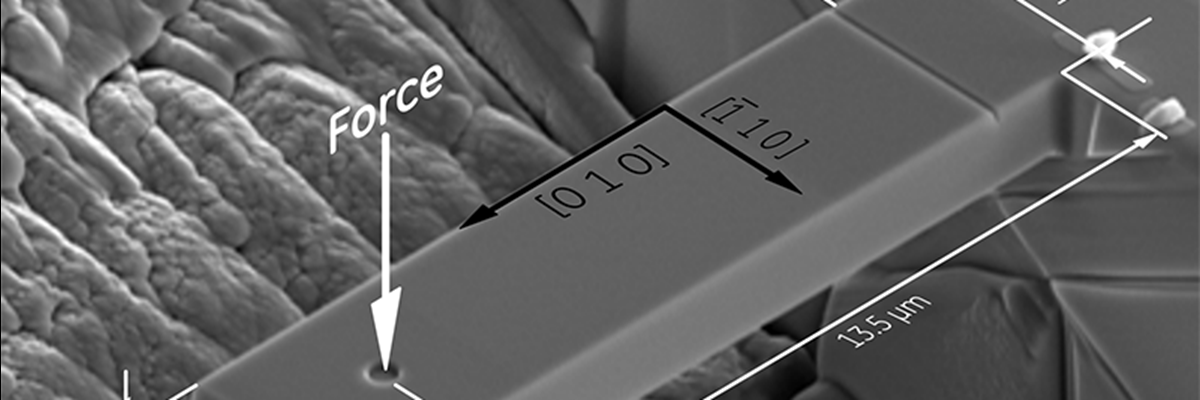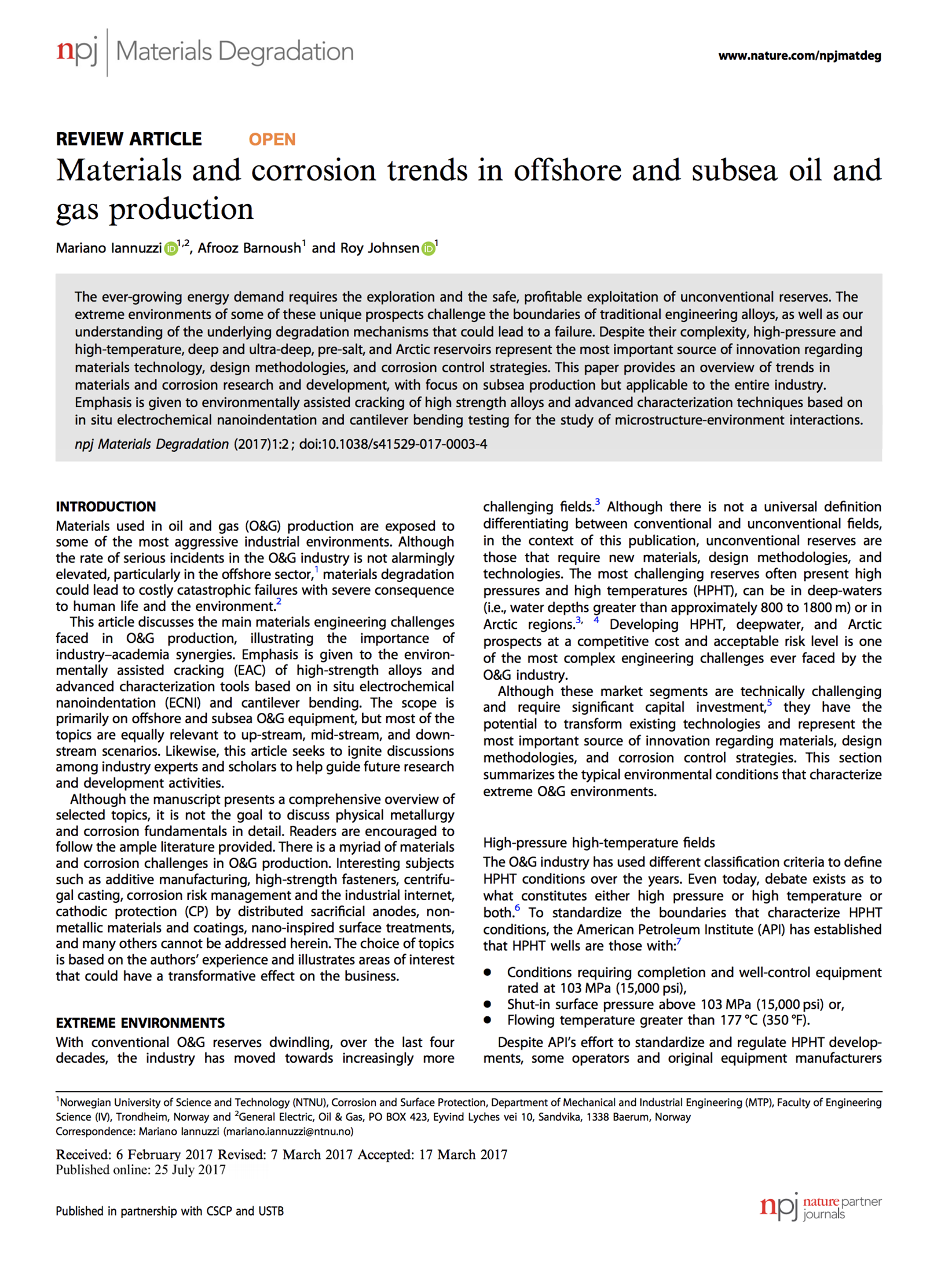Materials and corrosion trends in oil and gas production

Overview
Together with my colleagues Prof. Roy Johnsen and Afrooz Barnoush we have recently published a new position paper on corrosion and materials challenges in offshore and subsea oil and gas production. In this article, we discuss what in our experience are the subjects that could have a transformative effect on the business. We propose various research topics that could shed light on problems such as hydrogen stress cracking of high strength alloys and localized corrosion of corrosion resistant alloys. In particular, we discuss how scientists and engineers could push the boundaries of existing technologies, learning from the experience gained by other industries such as the nuclear, aerospace, and defence sectors.
Why is it important?
At present, the combination of low oil and gas prices and the need to exploit increasingly complex reservoirs has made clear that the industry must adapt to the new long-term reality.
Oil and gas companies have been traditionally labelled as conservative since large operators, and original equipment manufacturers resist the introduction of seemingly cutting-edge solutions. In this article, we discuss at length how the oil and gas community could benefit from the experience gained by other industries. In particular, we address how high-strength low alloy steels could replace the status quo imposed by blindly adhering the ISO 15156 “22 HRC” threshold. Likewise, we argue why the environmental boundaries of some corrosion resistant alloys are not well defined and why, in many instances, they could be considered overly conservative.
Pushing the materials selection envelope will undoubtedly introduce new risks, which will require expanding our understanding of fundamental degradation processes and innovative corrosion management strategies. In this paper, we present a plausible and pragmatic approach to deal with such new uncertainties.
Get the article
 M. Iannuzzi, A. Barnoush, R. Johnsen, “Materials and corrosion trends in offshore and subsea oil and gas production,” npj Materials Degradation, 1 (2017) 1–11. doi: 10.1038/s41529–017–0003–4
M. Iannuzzi, A. Barnoush, R. Johnsen, “Materials and corrosion trends in offshore and subsea oil and gas production,” npj Materials Degradation, 1 (2017) 1–11. doi: 10.1038/s41529–017–0003–4
Abstract
The ever-growing energy demand requires the exploration and the safe, profitable exploitation of unconventional reserves. The extreme environments of some of these unique prospects challenge the boundaries of traditional engineering alloys, as well as our understanding of the underlying degradation mechanisms that could lead to failure. Despite their complexity, high-pressure and high-temperature, deep and ultra-deep, pre-salt, and Arctic reservoirs represent the most important source of innovation regarding materials technology, design methodologies, and corrosion control strategies. This paper provides an overview of trends in materials and corrosion research and development, with a focus on subsea production but applicable to the entire industry. Emphasis is given to environmentally assisted cracking of high strength alloys and advanced characterization techniques based on in situ electrochemical nanoindentation and cantilever bending testing for the study of microstructure-environment interactions.
Citation
M. Iannuzzi, A. Barnoush, R. Johnsen, Materials and corrosion trends in offshore and subsea oil and gas production, npj Materials Degradation, 1 (2017) 1–11. doi: 10.1038/s41529–017–0003–4.
Copyright etc.
The article has been published as OpenAccess, distributed under the terms of the Creative Commons Attribution License, which permits unrestricted use, distribution, and reproduction in any medium, provided the original author and source are credited.
You can also access the Engrxiv pre-print repository here.

